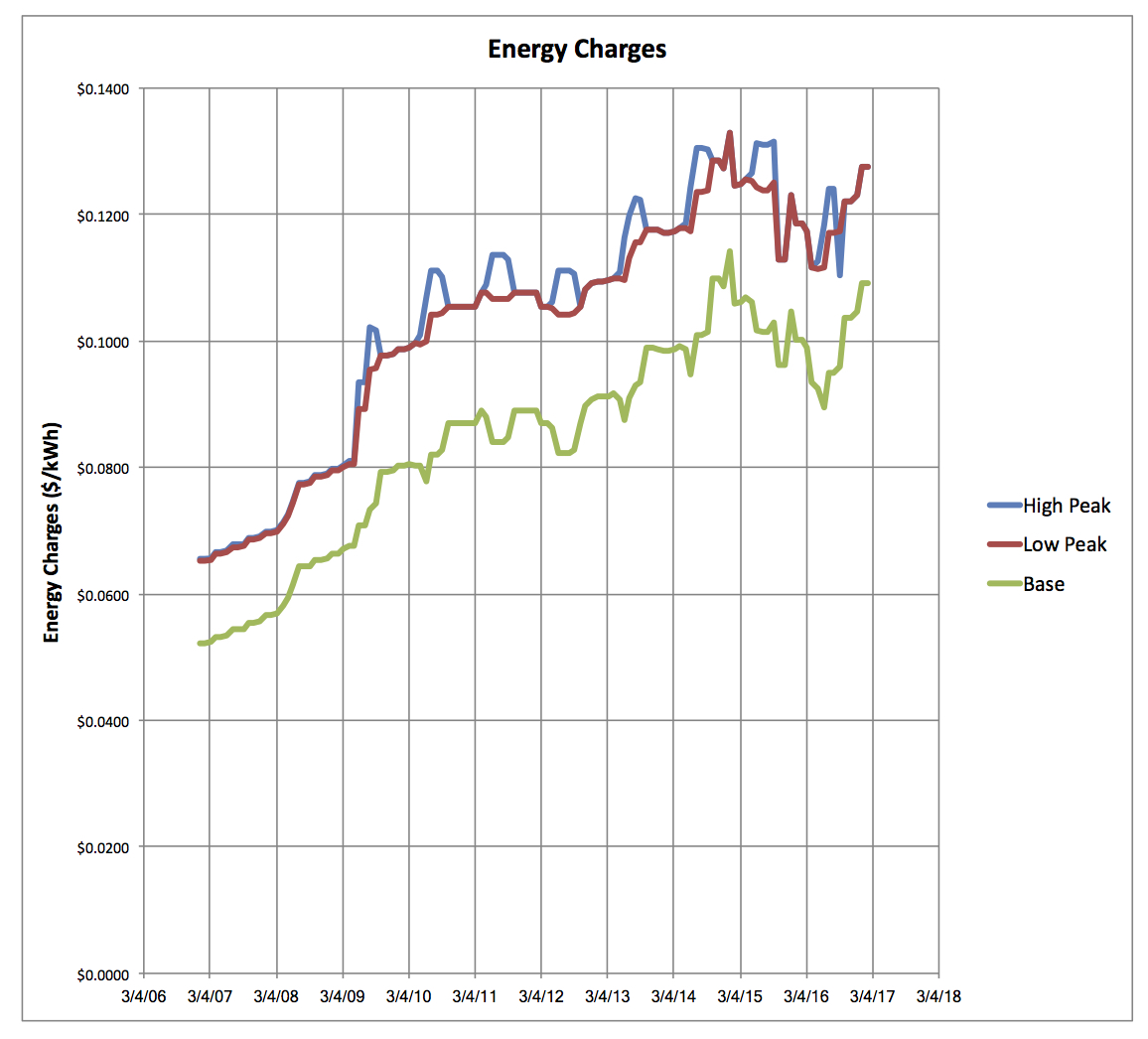Today, Occidental's 1 MW solar array is 4 years old. In the last year the array produced 1.82 GWh of electrical energy.
Good Morning Occidental!
Today (Saturday, March 4, 2017), Occidental's 1 MW solar array is 4 years old.

In the last year the array produced 1.82 GWh of electrical energy. For comparison here are the numbers from previous years,
Login ID = oxysolar
Password = 1600solar
Apps for your phone can be found by searching for the company which runs the website, AlsoEnergy.
On the financial side of things, our electrical bills have been lower these last three years due to the energy generated by the solar array. Over the last year the solar array saved the college $246k. For comparison here are the numbers from previous years,
For those of you concerned about climate change, recent events have been worrisome. After a 100-year rise in average global temperatures both NASA and NOAA concluded that last year was the hottest on record, the third record year in a row [3]. In the face of these facts the incoming Trump administration appears keen to undo many of the Obama administration’s efforts to fight climate change. It seems clear that efforts to move to cleaner energy will largely be carried out at the state and local level in the years to come. California has done a lot; including large hydro we get 27.3% of our energy from renewables [4] At Oxy we are at 12.2% and there is more we can do right here on campus.
the solar savings to equal $3.423M (cost of the array) also earning 8% annually.
newsletters will note that every year the time to payoff seems to getting longer! What’s going on? Though production
has remained steady our yearly savings over the last 4 years have fluctuated wildly. A clue can be found by taking the
ratio of the two sets of numbers above,
1st year = 13.7 cents/kWh
2nd year = 15.6 cents/kWh
3rd year = 13.0 cents/kWh
4th year = 13.7 cents/kWh
The average price of electricity has been on a rollercoaster these last 4 years. Here’s a plot of what the LADWP has
been charging us for electricity over the last 10 years. The different colors represent the varying costs of electricity
depending on time of day, so-called Time Of Use (TOU) pricing.

which correlate nicely with our savings. That affects my projections in two ways. First yearly savings are not increasing
and my average inflation rate gets a little lower every year. Nevertheless the long-term and short-term trends are both
upward so I have hope our yearly savings will return to the assumed trend line in the not too distant future.
[4] 2015 data from http://www.energy.ca.gov/almanac/electricity_data/total_system_power.html
